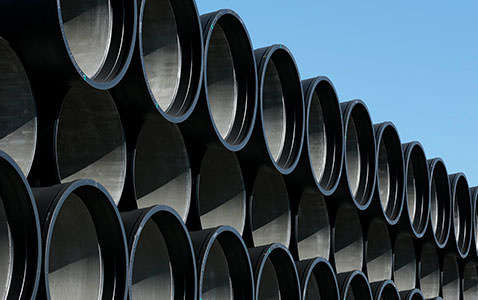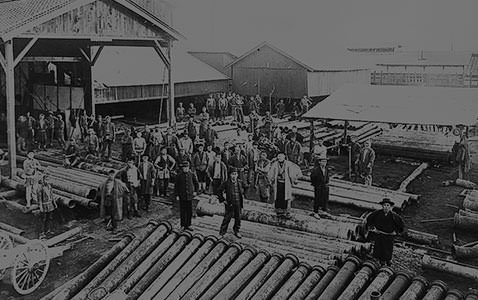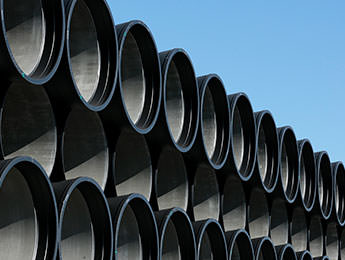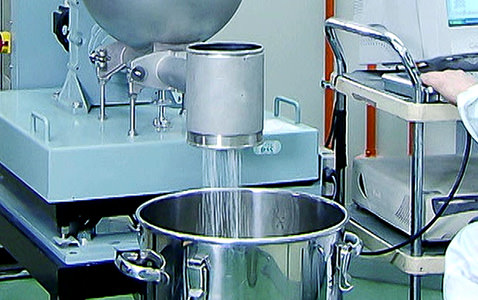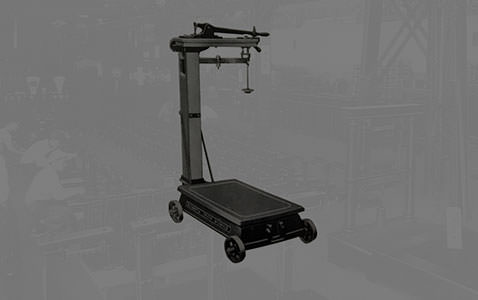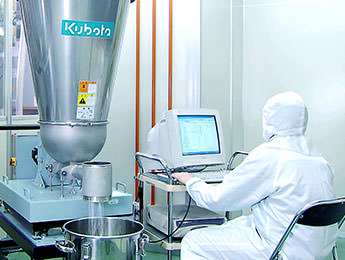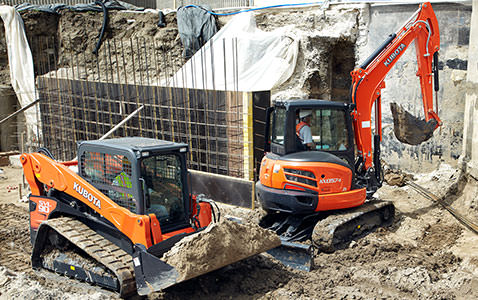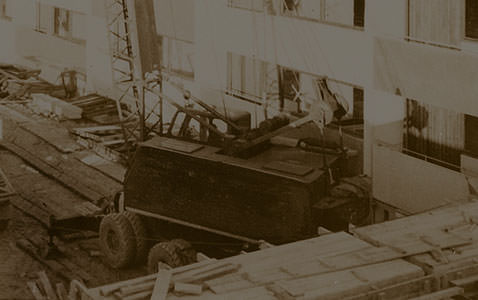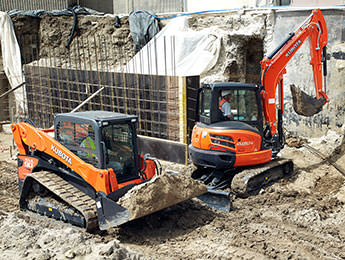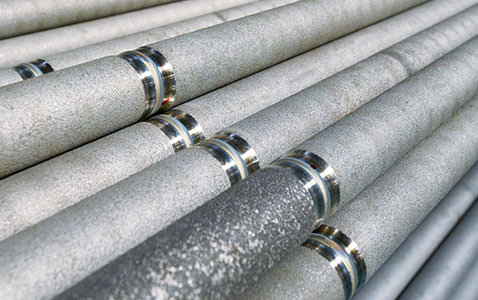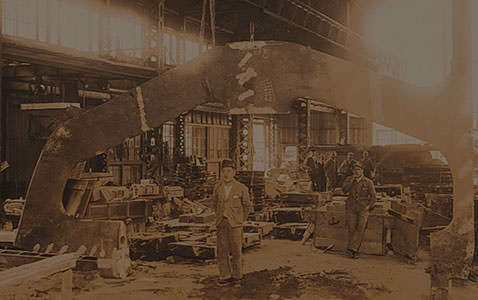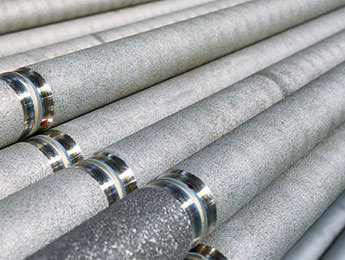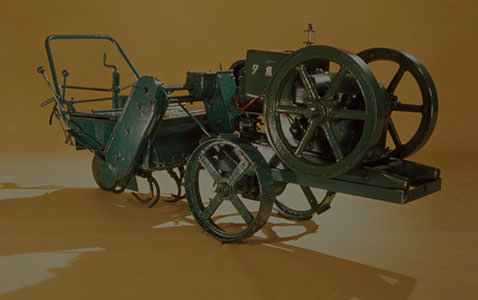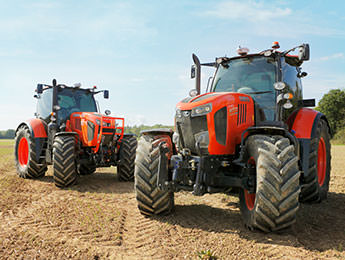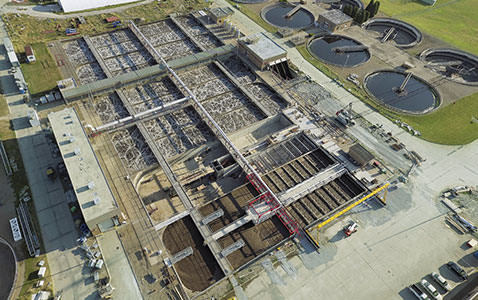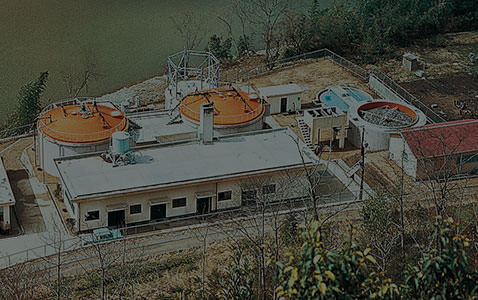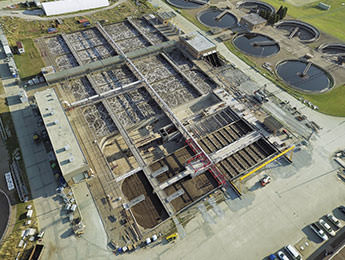Pursuing the Future of the People, Environment, and Industry. Kubota’s Engine Acts as the “Heart that Sustains Industries”
Engines
Kubota began producing engines for the power source of such agricultural equipment as grain threshers and pumps. Kubota’s engines, which were made from its cast iron and mechanical technology, were later installed in the company’s own agricultural as well as construction equipment. Furthermore, they were sold externally and provided as OEM parts, attaining the largest share in the global market for small industrial diesel engines. What made this possible was Kubota’s principle to stand by the people and environment. As “the heart that sustains industries,” Kubota’s engines support the society.
Scroll Down
Leading World’s Water Infrastructure
Pipe System
Meeting Various Industrial Needs
Electronic Equipped Machinery
1920s
A New Step Forward After World War I
After World War I, the Japanese economy gradually went downhill. This also greatly affected Kubota’s core businesses: casting, iron pipes, and machinery. The impact on the machinery division was particularly great, requiring the company to pursue a new business to compensate for the loss. Thus, Kubota took a step forward in a new domain.
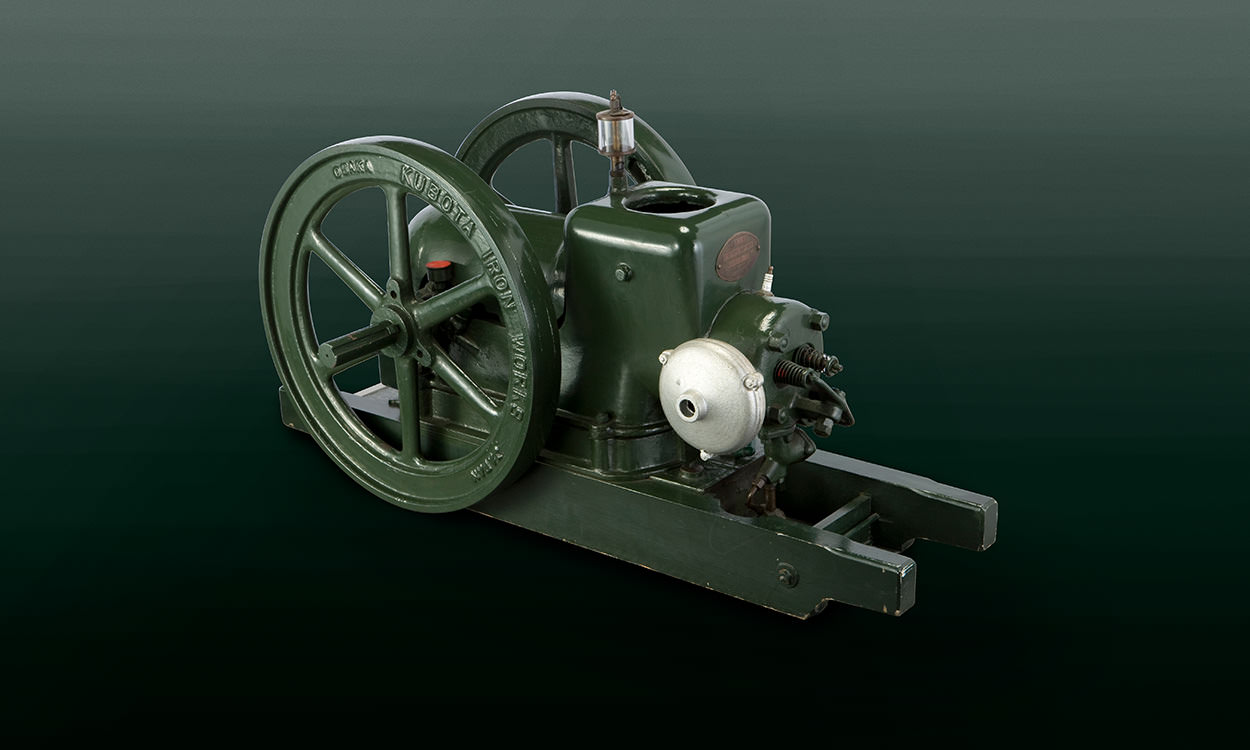
Oil Engines for Agricultural/Industrial Use
The Origin of Kubota’s Agricultural Machinery. Starting the Domestic Production of Engines
Kubota, which was hit by the economic recession following WWI, sought a path forward in agricultural kerosene engines, which were rapidly growing in the market at the time. Combining the casting technique it had developed since its founding and the facilities of the Machinery Division, Kubota’s new challenge to manufacture Japanese engines began.
1930s
Industrial Engines Shift from Gasoline to Diesel
In addition to such qualities as durability and water/dust resistance, industrial engines require high standards of maintainability and stability. Compared to kerosene engines, diesel engines could provide these qualities at a much higher level, and soon became the norm for industrial engines. Accordingly, Kubota started developing diesel engines, as well.
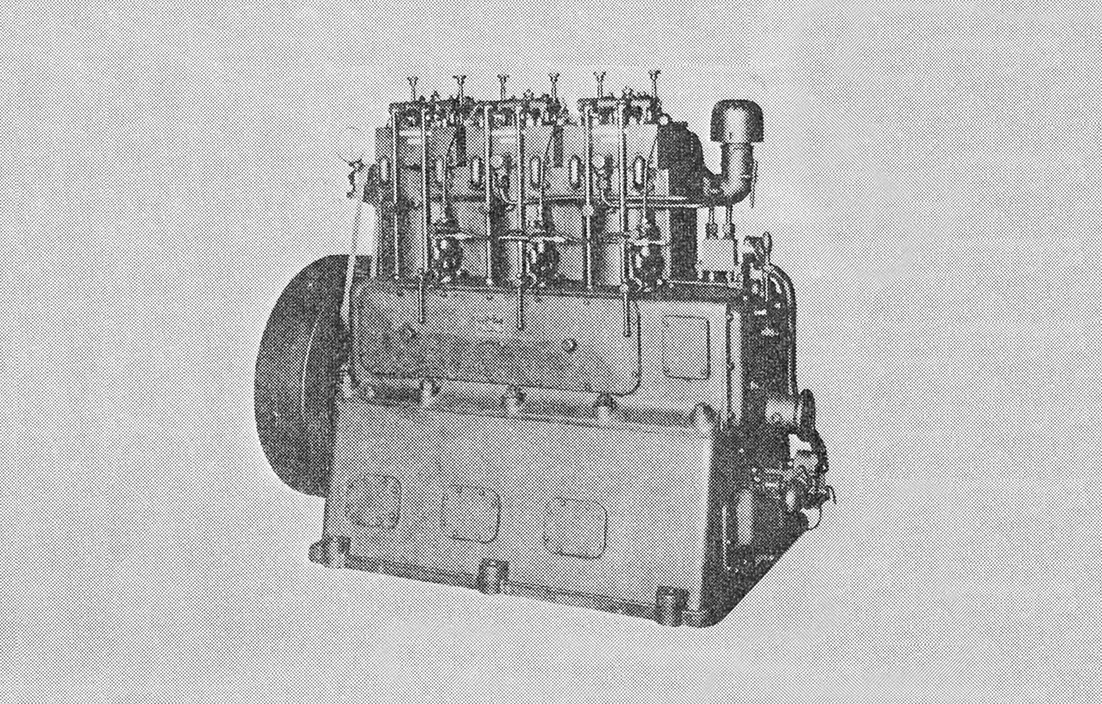
Diesel Engine
Expanding the Production of Diesel Engines
Kubota developed marine diesel engines, applying the production technique of kerosene engines. Capturing the changes in market needs, it started developing land-based diesel engines.
1950s
Engines Become the “Heart” that Sustains Industries
A few years after the end of the war, the Japanese economy recovered from its initial chaos following the war and entered into an era of free competition. Engines, which contributed to the greater production of crops, were appreciated, and its demand increased explosively. Kubota also resumed the manufacturing of engines, which served as the “heart” that sustained Japanese industries.
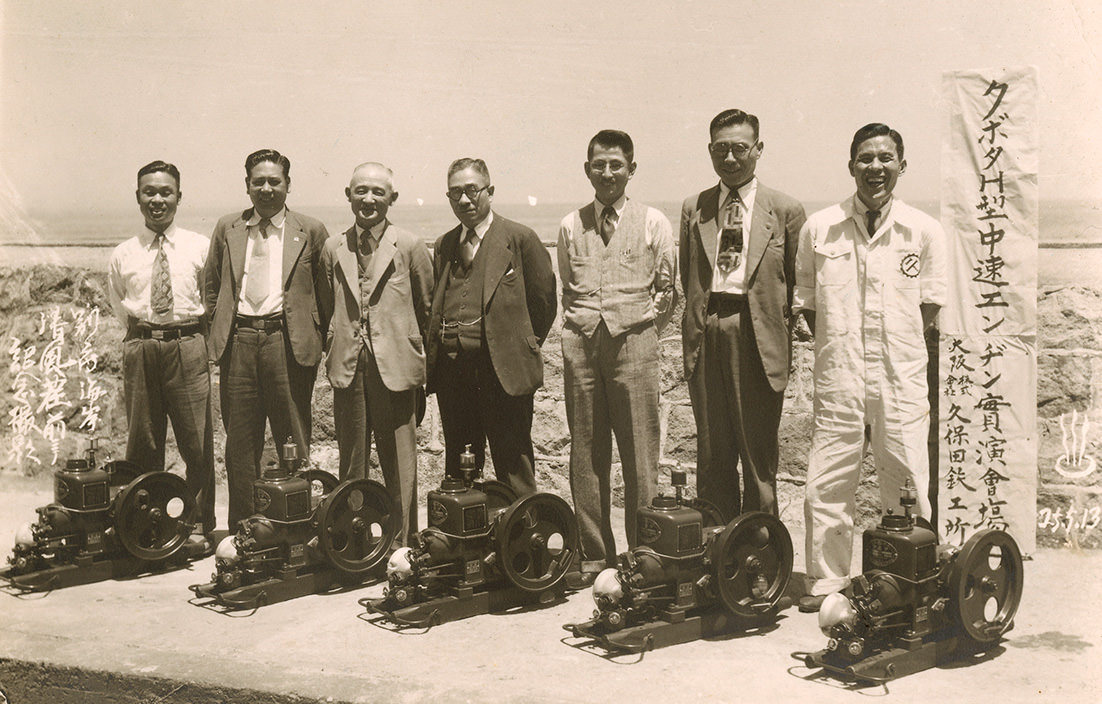
Horizontal Type Water-Cooled Diesel Engine
The First Medium-Speed Engine in the Industry is Made
As the era of free competition arrived, market needs greatly changed. Standing by and listening to the farmers, and responding to the demands of the market, Kubota developed an engine that was lightweight and simple to operate. Since then, the engines that Kubota released swept the market.
1970s
The Dawn of the Era of Tractors and Combine Harvesters
With a worldwide food crisis that took place in 1972, the demand for agricultural machinery rapidly increased. New demands for tractors and combine harvesters were especially high, and the “era of tractors and combine harvesters” began. Kubota’s agricultural machinery became explosively popular, and the engines were the heart that sustained them.
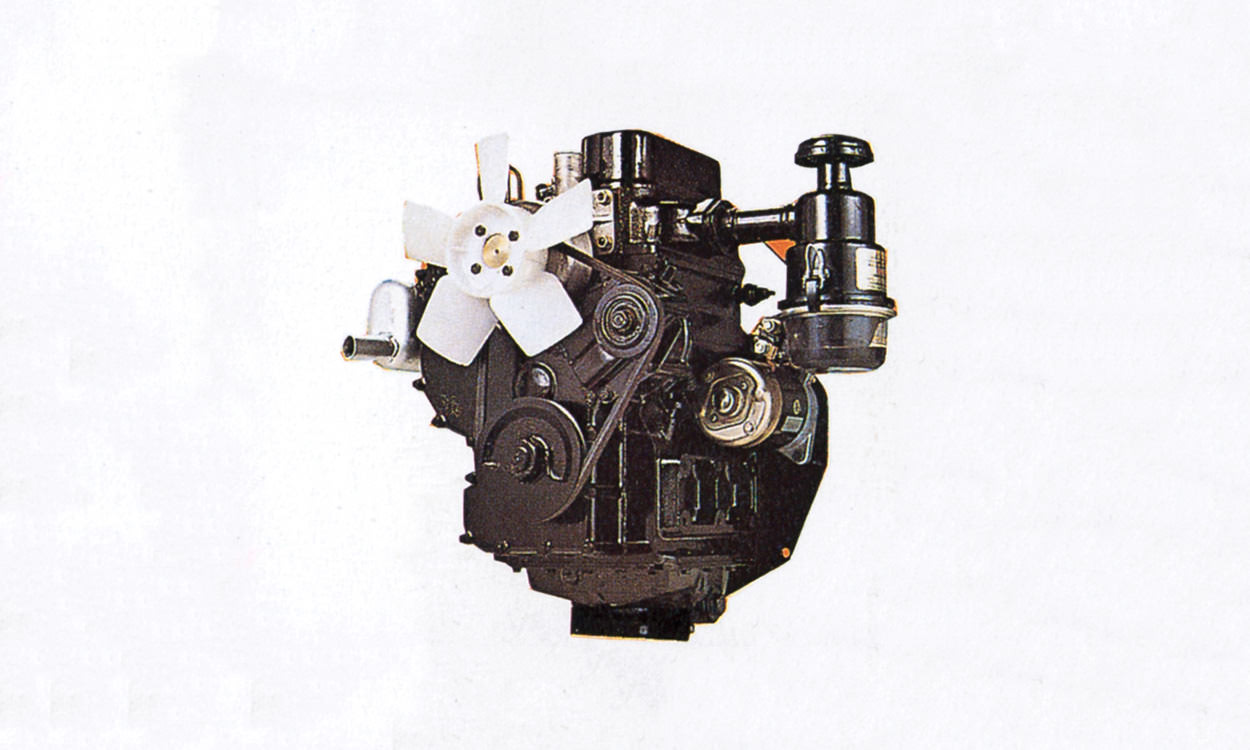
Vertical Diesel Engine
The Extraordinary Growth of Agricultural Machinery and the Development of Engines
The demand for agricultural mechanization and worldwide food shortage gave rise to the agricultural equipment boom in Japan. Agriculture transitioned from a “walking task” to a “driving work,” and Kubota supported this transition with its engines.
1980s
The Maturing of the Agricultural Equipment Market
As the use of tractors and combine harvesters spread, the market for agricultural machinery matured in Japan. In addition, with the second rice acreage reduction program, the Japanese government promoted the conversion to such crop production as barley and soy, and new demands for agricultural machinery rose. Kubota expanded its lineup of engines, responding to the diversifying needs of farmers.
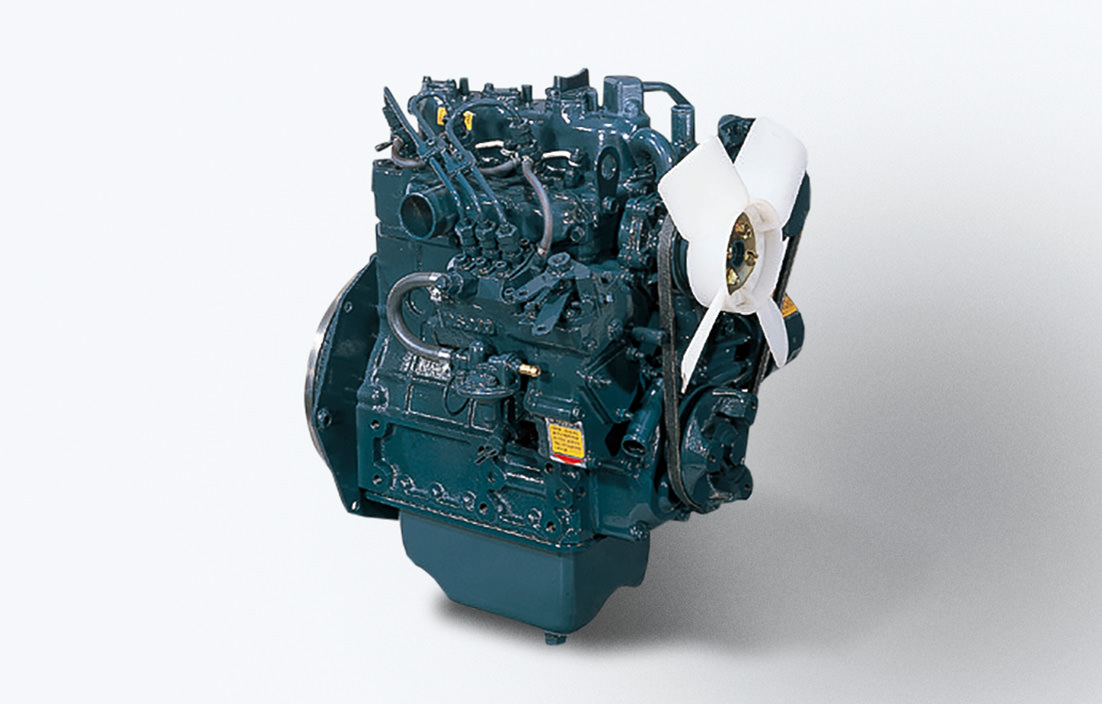
Super Mini Series
A Leap to the World Stage as an International Manufacturer of Compact All-Purpose Engines
The maturation of the market resulted in a diversification of demands. In order to respond to each demand, Kubota expanded its product lineup. Its name started to be recognized internationally, as well.
1990s-
The Strengthening of Environmental Regulations
Rapid economic growth caused pollution, and environmental protection became an issue that needed to be addressed not only by Japan but also on a global scale. As engine manufacturers responded to strict regulations, Kubota proactively addressed the issue for the sake of Earth’s future as one of the industry leaders.
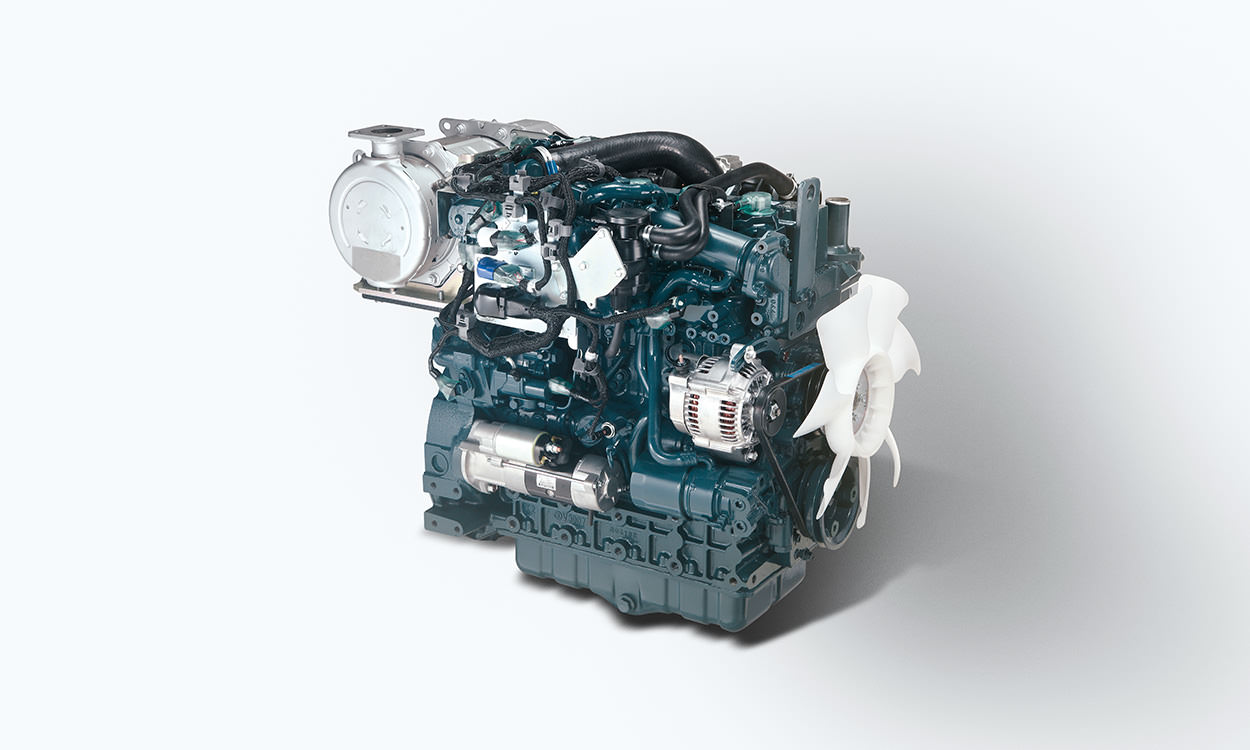
E-TVCS Combustion System
Opening the Future for Industrial Diesel Engine
The advancement of technology has greatly impacted the Earth’s environment as well. Kubota took the initiative to meet emission standards, at the same time, challenged to develop technology that, on the contrary, increased the size and horsepower of its equipment. It continues to promote initiatives for the future of the Earth and industry.
